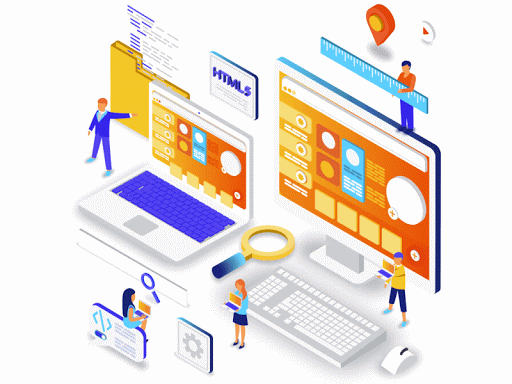Advantages of Customized Application Development:
- Tailored Solutions: Custom applications are designed to fit the exact needs of the client, making them highly effective and efficient.
- Enhanced Productivity: Custom applications can streamline workflows and automate processes, leading to increased productivity and reduced manual work.
- Competitive Advantage: Having a unique software solution can give organizations a competitive edge in their industry.
- Scalability: Custom applications can be designed with scalability in mind, allowing them to grow and adapt to the organization’s changing needs.
- Data Security: Customized applications can incorporate robust security measures tailored to the organization’s specific security requirements.
- Cost Savings: While the upfront development cost may be higher, custom applications can lead to cost savings in the long run by eliminating licensing fees and reducing the need for multiple software tools.

Customized application development, also known as bespoke software development, is the process of creating software applications that are tailored to meet the specific needs and requirements of a particular individual, business, or organization. This approach involves designing, building, and deploying a unique software solution from scratch, rather than using off-the-shelf software that serves a broader audience.
Requirement Gathering: The first step is to gather detailed requirements from the client. This involves understanding the organization’s goals, workflows, challenges, and the functionalities required from the custom application. Close collaboration between developers and stakeholders is crucial at this stage to ensure a comprehensive understanding of the project scope.
Analysis and Planning: Once the requirements are gathered, the development team analyzes the information and plans the architecture and technology stack needed for the application. They also define the project timeline, budget, and resource allocation.
Design: The application’s user interface (UI) and user experience (UX) are designed based on the gathered requirements. Designers create wireframes and mockups to visualize the application’s layout, navigation, and overall look and feel.
Development: The actual coding and development of the customized application take place in this phase. Skilled developers write the code using programming languages and frameworks best suited for the project’s requirements. The development process follows agile methodologies to ensure flexibility and iterative improvements.
Testing: Thorough testing is crucial to ensure the application works as expected and is free of bugs and errors. Quality assurance (QA) engineers conduct various tests, including functional testing, performance testing, security testing, and user acceptance testing (UAT).
Deployment: Once the application passes all necessary tests, it is deployed to a live environment where users can access and interact with it.
Maintenance and Support: After deployment, ongoing maintenance and support are provided to ensure the application remains up-to-date, secure, and efficient. Regular updates and bug fixes may be required as the application evolves and adapts to changing needs.
Overall, customized application development offers tailored solutions that can significantly benefit organizations by addressing their unique challenges and providing a higher level of control and efficiency compared to off-the-shelf software solutions.
